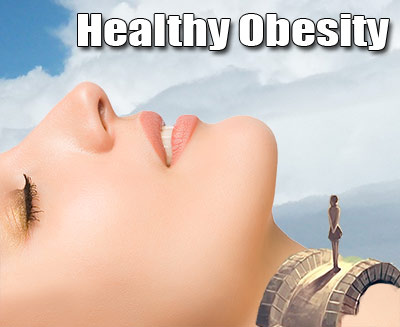Before you leave your house in the morning, you might be relying on some harsh and even toxic chemicals to help you look good. From shampoos and shaving creams to skin products and makeup, we cannot imagine a day without our personal care products.
Most cosmetics are a chemical mix of about 200 compounds. These synthetic chemicals are often industrial grade and may not be suitable for regular human use. Some of these synthetic chemicals have even been linked to cancer, infertility and birth defects.
About 60% of the topical applicants are absorbed into the body – And this is a major cause of concern. Most often the combination of chemicals is dangerous and deadly over prolonged use.
Know more about some common chemicals found in cosmetics and their potential dangers:
Acetone: Used in hair spray, nail polish remover, foot treatment and skin lighteners
Possible health hazards: May cause dizziness, eye skin irritation, etc.
Benzoyl peroxide: Used in OTC acne products
Possible health hazards: May cause tumor, skin irritation, eye irritation and drying/flaking of skin. The chemical and its derivatives may act as a mutagen that may damage the human DNA. BP is also said to generate free radicals.
Butyl acetate: Present in nail polish and nail strengtheners
Possible health hazards: Vapor from this chemical may cause dizziness or drowsiness. Prolonged usage may result in dry and broken skin. This ingredient is suspected of causing neurotoxicity.
BHA (butylated hydroxyanisole) and BHT (butylated hydroxytoluene): Used in moisturizer and makeup, it is also used as a preservative in lipsticks, moisturizers etc.
Possible health hazards: May cause allergy, may act as a carcinogen, can cause hormonal imbalance too
Coal tar: Used in colorants, to soften skin and to prevent scaling. P-phenylenediamine is a particular coal tar dye used in many hair dyes. Synonyms for coal tar include naphtha, naphtha distillate, benzin B70, or petroleum benzin.
Possible health hazards: Carcinogenic agent
DBP (dibutyl phthalate): Used in nail related products to bring in sheen and polish and helps in dissolving other cosmetic ingredients. Used in hair sprays too.
Possible health hazards: May cause cancer, asthma, reproductive problems, etc.
Diethanolamine (DEA), cocamide DEA, lauramide DEA: Used as a foaming agent in shampoos, baby wash, shaving cream, moisturizers, etc.
Possible side effects: Can be absorbed into the skin though the pores and may turn to be carcinogenic. It may also rob the body of essential choline that is required for the fetal brain development. DEA can react with other ingredients in the cosmetic formula to form an extremely potent carcinogen called nitrosodiethanolamine (NDEA).
Formaldehyde/formaldehyde releasers: Present as a disinfectant and preservative in nail polish, soap, deodorant, shaving cream and other personal care products. Formaldehyde may not be listed as a separate ingredient but can result from the breakdown of other ingredients like diazolidinyl urea, quaternium compounds etc.
Possible health hazards: May cause cancer, eye irritation, genetic damage, immune system damage and asthma. The European Union has banned the use of formaldehyde in any form in cosmetics.

Glycol ethers: Widely used in nail polish, deodorants and perfumes. Works as a mutual solvent for many cosmetic ingredients.
Possible health hazards: May cause skin and eye irritation, fatigue, nausea, anemia and may interfere with the human reproductive system
Lanolin: Though considered safe for use in all kinds of cosmetics, lanolin may be contaminated with carcinogenic organo-phosphate pesticides and other chemicals that were used on the sheep. Allergic reactions such as rash, dizziness, itching and difficulty in breathing are also noticed.
Lead: Found in toothpaste, lipstick and other personal care products
Possible health hazards: Being a neurotoxin, lead can cause cCancer, developmental and reproductive toxicity, organ system toxicity, allergies and immunotoxicity, bioaccumulation.
Mercury: Compound of mercury to a limit of 65 parts per million is allowed by the FDA. Is used in mascara, skin lighteners and anti-aging treatments that remove age spots, freckles, blemishes and wrinkles.
Possible health hazards: May cause skin irritation, neurological damage, allergy as mercury easily passes through the skin. Can damage the kidneys and the nervous system, and interfere with the development of the brain in unborn children and very young children.
Nitro and polycyclic musk: May be found in products that are fragrant
Possible side effects: These ingredients may be easily absorbed though the skin and may cause allergy and in the long term may cause cancer.
Parabens: A group of chemicals widely used to inhibit the growth of microbes in cosmetics, liquid cleansers, Shampoos and conditioners.
Possible health hazards: May penetrate the skin and cause endocrine disorder and cause an enhanced risk level of breast cancer. Paraben is also implicated in reproductive toxicity, immunotoxicity, neurotoxicity and skin irritation. The European Union has restricted the use of paraben in cosmetic products. If you can’t avoid Paraben completely when you use a liquid cleaner, wash thoroughly after using the product. Avoid or at least reduce the time the product stays in contact with your skin.
PEG (Plyethylene Glycol): Used in sunscreen, baby care products. Widely used in deodorants, conditioners, moisturizers, etc. it is used as softeners, moisture carriers and solvents.
Possible side effects: May cause skin and eye irritation. Can harm the nervous system.
Petrolatum, petroleum based chemicals: These are petroleum products and are used in lipstick, lip balm, moisturizers etc
Possible health hazards: Extended exposure to this chemical may cause cancer as petroleum distillates are possible carcinogens. They also cause allergy and skin problems.
Phthalates: DBP, DMP and DEP are most commonly used in cosmetics. Used in fragrance products, deodorant and nail polish.
Possible side effects: May cause altered development of reproductive tissues, liver and kidney lesions, reproductive abnormalities, cell line transformation and may cause cancer.
Siloxanes: Widely used in makeup, moisturizer, and hair products, etc. This chemical is used to soften, smoothen and moisten. Extensively used in moisturizers and facial products.
Possible health hazards: May interfere with hormonal function, human fertility, etc. May cause cancer and affect the neurotransmitters.
Sodium Lauryl Sulfate (SLS) and Sodium Laureth Sulfate (SLES):Used in bubble bath, shampoo, shower gels, cleansers as it produces foam.
Possible side effects: May cause breathing difficulties, eye and skin irritation, depression. The residue of this chemical may remain in the body for a period of 5 days within which there is a possibility that it might enter the organs like brain, heart, liver and lungs thus causing damage to these organs over a long run.
Triclosan: Present in body wash, deodorants, tooth paste, hand wash, etc
Possible health hazards: Few of the antibacterial agents may be absorbed through the skin. These chemicals may be carcinogenic or toxic. In a few cases, triclosan traces have been found in breast milk. This chemical may interfere with testosterone functioning. Antibacterial soaps/solutions have the tendency to kill good and protective bacteria along with the harmful ones thus reducing the overall immunity.
Toluene: Used in nail polish, hair dye, nail glue, wig glue and hairpiece bonding.
Possible side effects: May cause dizziness, skin rashes, eye, nose, throat irritation and headaches. As potential long term effect, it may cause damage to the liver and kidney. It decreases fertility and is associated with reproductive and development damage.
Talc: Used in baby products, powder, eye shadow and deodorants.
Possible side effects: Used over a long time, it has perhaps the same effect as asbestos. Talc particles have been shown to cause tumors in the ovaries and lungs of cancer victims.



